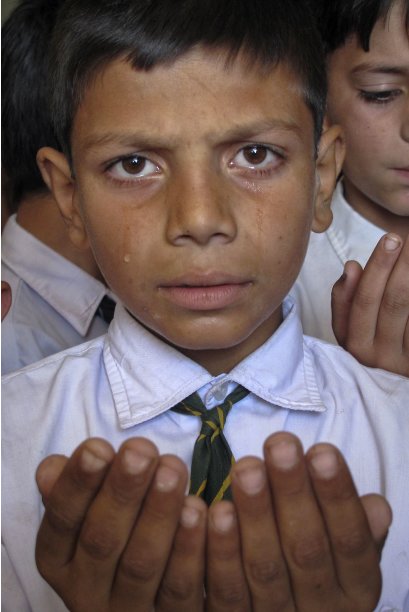http://www.thehindu.comWhen gun-totting men stopped their school wagon in Mingora last Tuesday around 12-45 p.m. asking for Malala Yousafzai, none of the three girls inside spoke. This, despite the terrorists threatening to shoot all of them if they did not identify Malala. Today, stirred by the braveheart who dared to stand up to the Taliban and her friends, Shazia and Kainat, who refused to identify her even under threat, girls across Pakistan are saying “I am Malala”. This is happening not just on the social media – which offers a degree of anonymity and security – but on television and on the streets; some with their faces uncovered. “I-am-Malala” has been trending not just in Pakistan but also in Afghanistan where girls education is equally at risk from the very same elements. On Saturday, the Afghanistan Education Ministry organized a nationwide prayer for her at schools in solidarity with Malala. She is being likened to “Malalai of Maiwand”, the “Afghan Joan of Arc” who rallied the Pashtun army against the British in 1880. In an echo of the Pakistan Peoples Party pet slogan “kitne Bhutto maroge, har ghar se Bhutto niklega” (how many Bhuttos will you kill, every house will produce one), the refrain across the country is “how many Malalas will you kill?’’ As daily vigils are being organized to pray for the speedy recovery of Malala and her friends, girls were coming forward; willing to stand up and be counted. Her classmate from the Khushal Public School in Mingora, asserted: “Every girl in Swat is Malala. We will educate ourselves. We will win. They can’t defeat us.” If anything, the fate of Malala – who came to represent the “voice of the girls of Swat” because of her blog, written under the pseudonym Gul Makai, in which she advocated girls right to education during the Taliban rein of terror over Swat – has made the media a bit circumspect about exposing the girls too much for fear that the terrorists might target them, too. Still, at vigils and demonstrations, children are turning up in considerable numbers; a rare sight in Pakistan where crowds are avoided given the impunity with which terrorists penetrate. Even in Peshawar – where there are indications of various terrorists outfits regrouping and mobilizing after a brief lull – girls are coming out in support of Malala; fearing that silence is no longer an option. Parents could also be seen encouraging their children to join in the slogan-shouting against the Taliban who have been nicknamed ‘Zaliman’ (ruthless) by Interior Minister Rehman Malik. In fact, the daily photographs of girls praying in schools for Malala is itself a testimony that the Taliban have not been successful in deterring the desire among most Pakistanis to send their girls to school after this latest round of violence targeting girls education. Malala today has become an icon of resistance; some insist the name has come to represent a movement in Pakistan. But, even before the attempt on her life made her an international headline and lit up a flame in many a heart to emulate her enough to say “I am Malala”, the fact is that there are number of Malalas across the country; even in the tribal lands along the Pakistan-Afghanistan border – areas which have been billed as the most dangerous place in the world in the Western narrative. Indeed, despite the terrorists whose writ runs large in these areas bombing hundreds of girls schools in pursuit of their agenda, nearly two lakh girls are still enrolled in schools across the Federally Administered Tribal Areas (FATA). These figures may not stand scrutiny – given the issues that bog government-run school education in the sub-continent – but recent reports from the frontier regions have shown girls not only attending schools in FATA but also travelling to Peshawar to compete in sporting events despite the risks involved.
M WAQAR..... "A man's ethical behavior should be based effectually on sympathy, education, and social ties; no religious basis is necessary.Man would indeed be in a poor way if he had to be restrained by fear of punishment and hope of reward after death." --Albert Einstein !!! NEWS,ARTICLES,EDITORIALS,MUSIC... Ze chi pe mayeen yum da agha pukhtunistan de.....(Liberal,Progressive,Secular World.)''Secularism is not against religion; it is the message of humanity.'' تل ده وی پثتونستآن
Saturday, October 13, 2012
Girls across Pakistan are saying “I am Malala”.
Subscribe to:
Post Comments (Atom)







No comments:
Post a Comment